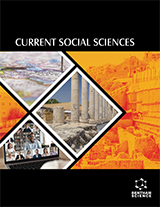Abstract
Since, the design of our cities tends to constrain people with impairment from performing their daily activities, removing barriers and making public space accessible for everyone is becoming a human rights-issue. However, efficiently improving accessibility requires knowledge about the location of obstacles in the urban environment and how these affect accessibility. Using GIS-models to map and measure accessibility, this study aims at providing new knowledge about the spatial distribution of accessibility for impaired persons in seven Swedish cities. Based on field surveys, detailed digital models of the pedestrian and public transport networks were created for each city. These models were used to evaluate the possibility for vision and mobility impaired citizens to reach different destinations. The results reveal how different types of flaws in the pedestrian network cause interruptions or force travellers to detours in the travel chain between home and destination, thus restricting accessibility. The results show where it is possible to live and independently perform daily activities as an impaired citizen and how travelling times and distances vary between impaired and other citizens. In conclusion, the study shows how planners, by using GIS-models, can easily enhance their knowledge about how flaws in the design of their cities affect accessibility for impaired citizens.













